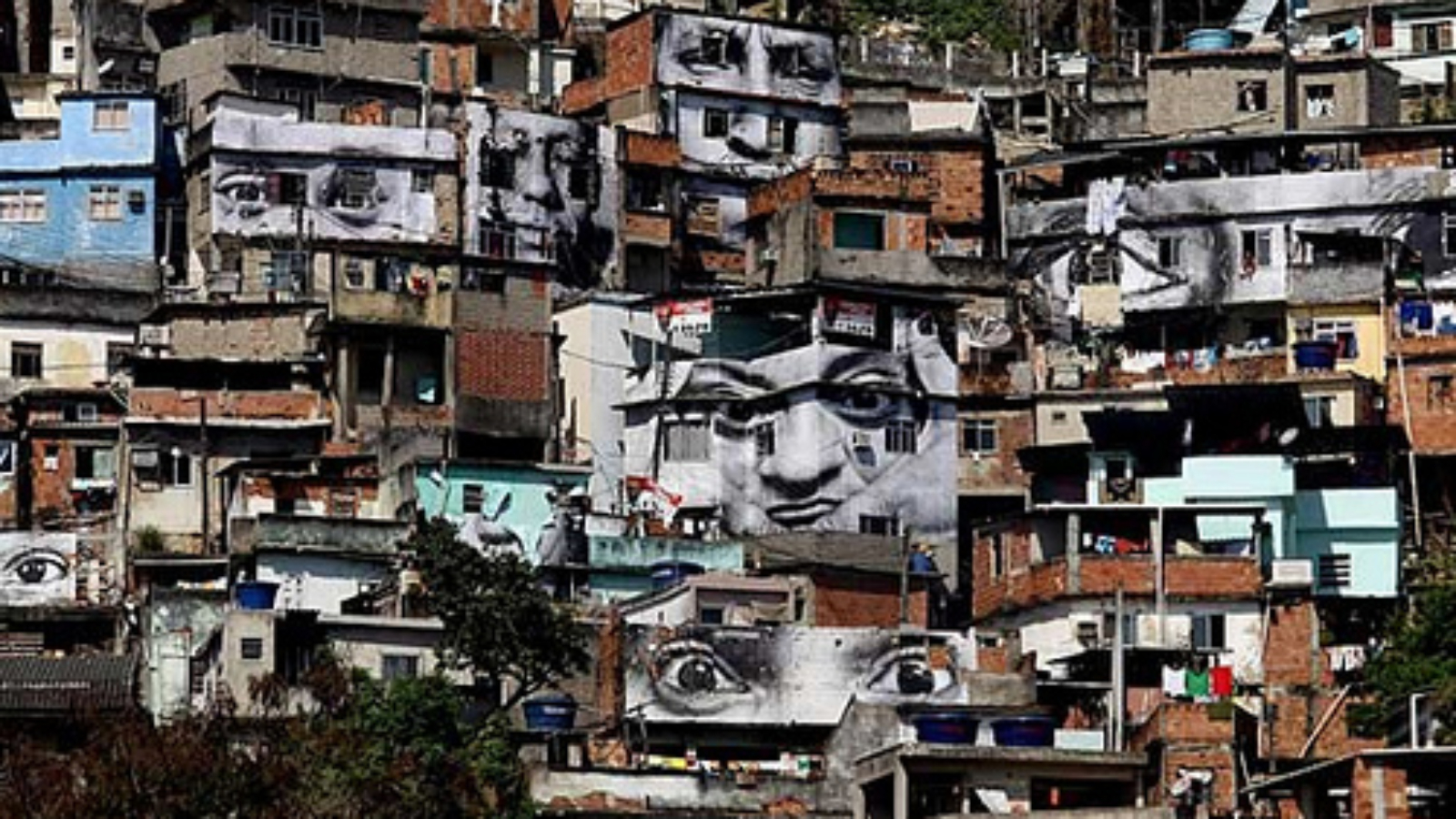by Vivian Lee
Enormous black-and-white photos, printed on waterproof vinyl, hang from walls in the slums of Cité de la Forestière in Paris, top ramshackle roofs in Kibera, Kenya, spread across hillsides in one of Rio’s favelas. There’s something different about these installations—not quite graffiti, but far from a museum. The faces in the images are familiar, the same, in fact, that call these places home. Community members even help with the artistic process, by “pasting” the large works up. The line between viewer and subject is blurred—in essence, the artwork encompasses and questions both. These large-scale public artworks are not only changing the landscape of these poverty-stricken places, but showing the world that art is everywhere; that slums are more than impoverished places. The streets become “the largest art gallery in the world.”
Twenty-seven-year-old JR is the guerilla artist behind these ambitious projects. He calls himself a photograffeur, from graffeur—French for graffiti. His real name has never been revealed. He keeps his photos from the press and maintains strict anonymity, allowing him to move all over the world without being detected—usually because what he does is technically illegal. His anonymity also allows for a more personal, intimate encounter with the subjects, letting them easily draw from own experiences.
Yesterday, it was announced he would receive the 2011 TED Prize.
The TED (Technology, Entertainment, Design) prize is an annual award given to an “exceptional individual.” Each winner, along with $100,000, receives a “One Wish to Change the World” which leads to “collaborative initiatives with far-reaching impact.” After months of planning with the TED committee, the recipient will reveal his or her humanitarian project. Almost more important than the prize money will be the exposure: when announced, the One Wish will certainly attract outside donations and help from corporate partners and influential supporters.
JR is an unusual choice—past winners include former President Bill Clinton and rock musician Bono—but a fitting and well-deserving one. TED prize director Amy Novogratz describes JR’s creations as having “inspired people to see art where they wouldn’t expect it and create it when they didn’t know they could. He’s putting a human face on some of the most critical social issues while redefining how we view, make and display art.” With such a large grant—his other pieces are funded by the money he makes selling his art in galleries and at auctions—he will able to create more ambitious projects that will give the world more unique and thought-provoking looks into unseen places.
JR will reveal his One Wish—a new and original piece of art—at the TED2011 in Long Beach, California at the end of February. See TedPrize.org for upcoming news.
Photo via flickr by Mary Hodder.
